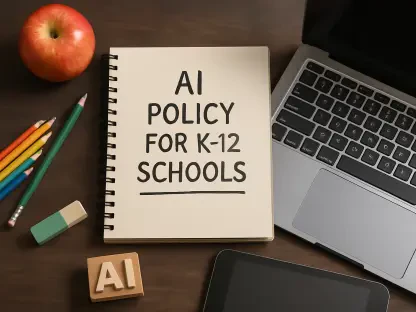The recent ratification of a four-year contract for the Chicago Teachers Union by the Chicago Board of Education marks a pivotal moment for educators and staff amid ongoing financial challenges. Approximately 30,000 educators and support personnel are impacted by this agreement, which enforces class size limitations, mandates the recruitment of additional staff like teacher assistants, and awards elementary school teachers an extra ten minutes for preparation. Valued at $1.4 billion, the contract’s negotiation journey began with promise over a year ago but gradually became fraught with difficulties, ultimately leading to the dismissal of former Chicago Public Schools CEO Pedro Martinez. Despite these underlying tensions, the Union’s President, Stacy Davis Gates, emphasized that the contract was secured without strike action, contrasting with the labor disputes seen in 2012, 2016, and 2019.
Financial Challenges and Budget Amendments
Managing Budget Constraints in Education
The board’s recent decision to amend the school year’s budget by incorporating $139 million from the city’s Tax Increment Financing (TIF) districts reflects broader attempts to financially bolster educational commitments. These surplus funds are not just for the teachers’ contract but also serve to cushion future negotiations, notably with the principals’ union. Despite this financial injection, the uncertainty that clouds funding beyond the current year through June 2028 casts a long shadow over the district’s fiscal strategy.
District leaders are acutely aware of an anticipated $500 million deficit set to impact the next academic year’s budget. To navigate these turbulent waters, concerted lobbying efforts for augmented state funding are underway. This urgency to secure reliable financial channels extends beyond the immediate need, reflecting a sector-wide predicament where educational systems juggle fiscal unpredictability while striving to uphold contractual commitments. The ongoing dilemma also highlights the delicate balance between adequate staffing and resource allocation critical to delivering quality education.
Addressing Long-term Financial Planning
Faced with the dual pressure of immediate budgetary needs and long-term fiscal planning, district authorities acknowledge the importance of sustainable solutions. The contingent nature of additional TIF district funding points to a need for a restructured financial framework capable of supporting educational endeavors without excessive reliance on unpredictable fiscal sources. The challenge lies in aligning short-term financial infusions with long-term stability, ensuring continuity in recruitment, and maintaining staff morale.
State funding remains a pivotal aspect of this strategic approach. Securing more substantial allocations could mitigate the looming fiscal shortfall, providing a buffer against future deficits. Engaging with state and local policymakers to underscore the importance of education and its funding becomes a critical component of the district’s agenda. Such collaborative efforts could pave the way for more predictable and substantial financial support, potentially alleviating the pervasive budgetary pressures.
Key Takeaways from the Negotiations
Contractual Developments and Strategic Gains
Reflecting on the recent contract negotiation, a significant takeaway is the CTU’s ability to secure an agreement without reverting to a strike—an approach contrasting past practices. This peaceful resolution underscores a strategic evolution in how the union engages with the board, potentially setting a precedent for future labor relations. These developments suggest a maturing of negotiation tactics that focus on dialogue and mutual agreement over confrontation.
The inclusion of class size limitations and additional preparatory time in the contract signifies a move towards addressing long-standing demands from educators. These provisions not only enhance teaching conditions but also reflect an acknowledgment of the critical role that manageable class sizes play in improving educational outcomes. Furthermore, allocating more time for teacher preparation underscores the board’s commitment to supporting instructional efficacy and teacher well-being, pivotal for sustaining educational excellence.
Strategic Focus on Advocacy and Collaboration
The board’s recent move to revise the school budget by adding $139 million from the city’s Tax Increment Financing (TIF) districts signifies efforts to strengthen financial commitments in education. These additional funds are not solely for the teachers’ contract but also act as a buffer for upcoming negotiations, especially with the principals’ union. Despite this monetary boost, there remains significant uncertainty about funding beyond the current year until June 2028, casting doubt on the district’s financial planning.
District leaders are keenly aware of a looming $500 million shortfall poised to affect next year’s budget. To tackle this challenge, they have embarked on rigorous lobbying to secure increased state funding. The urgency to establish stable financial pathways underscores a widespread educational challenge—managing fiscal unpredictability while trying to meet contractual obligations. This ongoing issue also underscores the delicate act of balancing staffing needs and resource allocation, both crucial for maintaining high-quality education.









